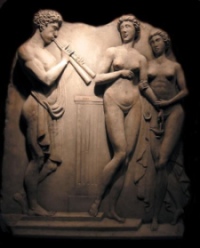
Often we like to look to the logic of an innovation to determine whether or not it will succeed. Perhaps instead, we should look to the music of an innovation. In the story below, ideas are transformed into tones to shelter them from the rough transit into the flow of time. Nietzsche’s Innovator seeks first to reach the ear and the heart, not the brain. The determining factor of survival is not truth or error, open or closed, logical or nonsensical— but whether a seedling can be planted and survive the rigors of natural selection. The Innovator speaking of his creation says: “…a seedling can only be destroyed– not refuted.”
I have called this principle, by which each slight variation, if useful, is preserved, by the term Natural Selection.
– Charles Darwin, The Origin of Species
By welcoming “storms, doubts, worms, and nastiness,” the Innovator embraces change and the possibility of failure. It’s not enough for an innovation to be spun into the friction-less space of the mind, it must be planted in the soil and given the chance to grow.
Music and innovation are mixed together in the practice of design thinking. Imagine Apple’s products without the music of their design. Although music should not be confused with beauty. As the economy tightens, standing next to the next generation of innovative products, we’ll be on the look out for the Music Man, the Pied Piper and the next singer-songwriter.
The Gay Science
Book Two, Paragraph 106
Friedrich Nietzsche
Music as an advocate
“I am thirsting for a composer,” said an innovator to his disciple, “who would learn my ideas from me and transpose them into his language; that way, I should reach men’s ears and hearts far better. With music one can seduce men to every error and every truth: who could refute a tone?” “Then you would like to be considered irrefutable?” said his disciple.
The innovator replied: “I wish for the seedling to become a tree. For doctrine to become a tree, it has to be believed for a good while; for it to be believed, it has to be considered irrefutable. The tree needs storms, doubts, worms, and nastiness to reveal the nature and strength of the seedling; let it break if it is not strong enough. But a seedling can only be destroyed– not refuted.
When he had said that, his disciple cried impetuously: “But I believe in your cause and consider it so strong that I shall say everything, everything that I still have in my mind against it.”
The innovator laughed in his heart and wagged a finger at him. “This kind of discipleship,” he said then, ” is the best; but it is also the most dangerous, and not every kind of doctrine can endure it.”
Comments closed

